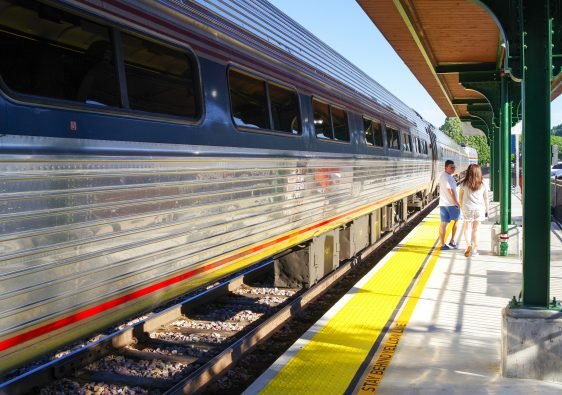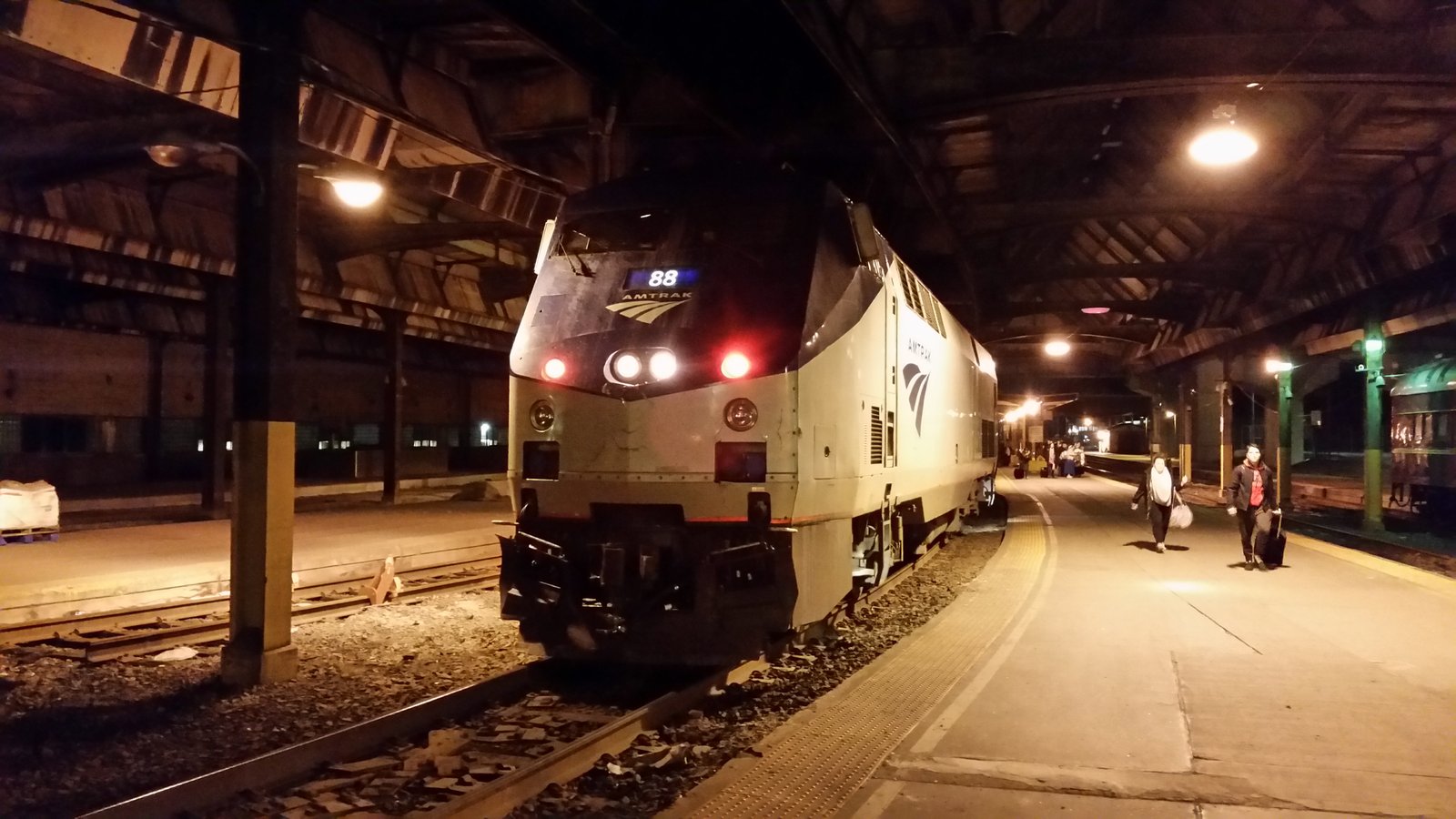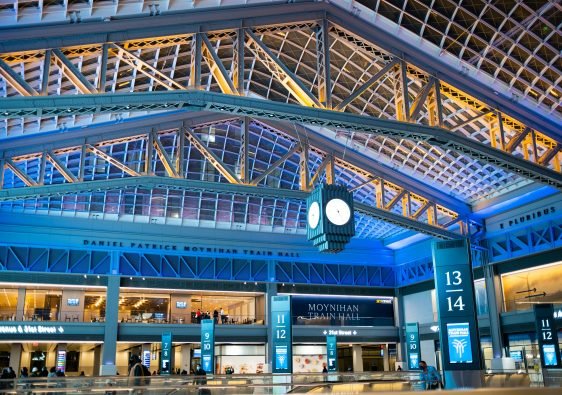There is candidly nothing like taking the train out of New York City. New York City and the railroad share a very special bond. The nostalgia, the history, and the legendary stories of the Empire State live around the railroad. They run chest deep. Previously, the highlights of Amtrak’s legendary Northeast Corridor between Boston and Washington were revealed. Now, it’s time to board an Amtrak Empire corridor train and venture up the Empire Route to Albany, Buffalo, and Niagara Falls. The ride takes approximately nine hours. The ride time may be a bit tempting, but if everyone sits back back and lets the wheels do the clicking and clacking, the adventure is well worth the time spent. As they say, “anything can change in a New York minute”.
#5 Freedom Tunnel: Taking an Amtrak train to Niagara Falls is a railroading experience like no other. Having departed cavernous New York Penn Station, the train snakes its way through a tunnel under the west side of New York City. Emerging from the tunnel near the Jacob Javits Convention Center, the train converts from third rail power to diesel propulsion. The train passes below a number of well-known city streets until it reaches the Freedom Tunnel. The Freedom Tunnel was constructed in the 1930s by Robert Moses, with the tracks running beneath Riverside Park. Long before Amtrak trains were running through the Freedom Tunnel, the New York Central Railroad ran freight trains on the line. Why is it called Freedom Tunnel? Graffiti artist Christopher “Freedom” Pape was known for using the tunnel as his studio. Further, scores of homeless people lived within the confines of the tunnel, ‘free’ of rent. Amtrak service on the Empire Route began in 1991. The Freedom Tunnel runs 2.6 miles, from 72nd Street to 124th Street. Emerging from the tunnel, the Hudson River finally comes into view.
#4 Spuyten Duyvil Bridge: Picking up speed, the train continues north towards the George Washington Bridge. There, the train passes through a deep cut beneath the east end of the bridge. The train has reached the northern tip of Manhattan Island. Spanning the mouth of Harlem River between Manhattan and the Bronx is Spuyten Duyvil Bridge. Spuyten Duyvil is Dutch, meaning “The Devil’s Spout”. Spuyten Duyvil Bridge, a swing bridge, was built in 1900. At this location, the Harlem River meets the Hudson River. The current is known to be highly treacherous. Circa 1980, a Circle Line tour boat struck the movable section of the Spuyten Duyvil Bridge. The incident resulted in the bridge being knocked out of service. For over 10 years, the tracks remained dormant, cutting off rail service between Manhattan and the Bronx. Amtrak’s resurrection of the West Side Line and the Spuyten Duyvil Bridge changed everything for the better. Crossing the Spuyten Duyvil Bridge, passengers should have their cameras out-ready to snap a picture of the Harlem River and the Henry Hudson Parkway spanning the river high up above.
#3 Bannerman’s Castle: Passing through the quaint surroundings of Dutchess County, the train passes an historic relic. Sitting on Pollepel Island nearest to the tracks is the ruins of Bannerman’s Castle. Bannerman’s Castle is one many tiny jewels surrounded by the Hudson Highlands. Once an uninhabited place, accessible only by boat, Bannerman’s Castle was considered haunted by some Indian tribes and soon after became a refuge for those trying to escape them. These superstitions and others promoted by later Dutch sailors make for many fanciful tales. The name Pollepel originated with a legend about a young girl named Polly who was romantically rescued from the breaking river ice. She landed on the island shore, where she was promptly married to her sweetheart, who rescued her and her companion. The island was thereafter called Pollepel. Bannerman’s Castle dates back to Francis Bannerman’s migration from Dundee, Scotland in 1851. It was in 1900, the son David Bannerman discovered the island while canoeing on the river. He soon purchased it from the Taft family. In 1901, he constructed the simulated Scottish castle, where it served as a simple residence. Speeding past the historic structure, a photograph opportunity cannot be passed up.
#2 Albany: Speeding northwards along the Hudson, the scenery of the mighty river continues to unfold. Finally, the train reaches a pivotal part of its journey. At the Albany-Rensselaer station, the train changes engines. As one engine is uncoupled and pulls away, a fully fueled engine replaces it. Once again, the train is underway. The train crosses a lift bridge over the Hudson River. The Hudson River and the skyline of Albany drop out of sight. Soon after, the legendary Erie Canal comes into view. Leaving the Albany area, the mountainous scenery of the Hudson River Valley drops out. In contrast to the Hudson River Valley, the terrain of central and western New York is way flatter. On this leg of the route, the train meets up with many CSX freight trains. The train makes stops at the suburban New York towns of Schenectady, Amsterdam, Utica, Rome, Syracuse, and Rochester. It seems as if leaving New York Penn Station was a lifetime ago.
#1 Buffalo Central Terminal: Nearing downtown Buffalo, the train pulls past another historic relic-a historic structure in the process of being reborn. Buffalo Central Terminal, an Art-Deco masterpiece of its time, was built in 1929. In its hay day, it handled over 200 trains and 10, 000 passengers daily. It included shops, a restaurant, soda fountain, a parking garage, and all other services required for daily passenger operations. With the decline of passenger service in the mid-1960s, the New York Central decommissioned the grand station and created a smaller station to service the remaining passengers. Recently, Amtrak replaced the original Exchange Street Station with a more modern, state of the art station with a high platform. Presently, Buffalo Central Terminal is in the process of being restored back into a full-functioning passenger station, along with a bus terminal and light rail station serving the downtown and suburban area.
Did anyone know that Buffalo Wings were first introduced in downtown Buffalo? Of course, buffalo don’t fly. Buffalo Wings were first introduced in 1963 at a restaurant named the Anchor Bar, on Main Street. Today, Anchor Bar is known for making a whole selection of sauces, including its signature “Suicidal” sauce. No visit to Buffalo is complete without visiting the Anchor Bar. Their wings put them on the map.
Departing Buffalo, the train moves along to its final destination-the majestic city of Niagara Falls. Forming the border between New York State and Canada along the Niagara River, Niagara Falls is the romantic hot spot of the northeast. It is known to be the Honeymoon Capital. In 1901, history was made when Annie Taylor was the first person to conquer Niagara Falls in a barrel. After climbing inside her airtight wooden barrel, the air pressure was compressed to 30 psi with a bicycle pump. Despite being bruised and battered, Annie made it. She soon expected fame and fortune. Annie Taylor died in poverty. Amtrak’s Empire Route is more than just a line with highlights on the Hudson. It is a time capsule taking passengers on a grand tour of one of the most serene states in the nation, crossing paths with history from a bye-gone era.




